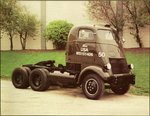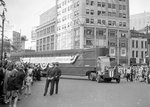Njaco
The Pop-Tart Whisperer
I recall reading that the B-24 required more physical effort from the pilots than a B-17 did to maintain formation.
I recall reading that the B-24's "Davis" wing was much more vulnerable to catastrophic damage than the B-17's wing.
I recall reading about B-24s flying with their bomb-bay doors slightly open to prevent the accumulation of fuel fumes from causing a catastrophic explosion.
I recall reading that bailing out of a B-24 was more difficult than a B-17 because of its layout.
Anyone else recall reading about these B-24 characteristics?
I've read the exact same things and therefore my vote goes with the Fortress.


